Venturing into the vibrant landscapes of Peru and Bolivia offers an unforgettable experience. However, it’s crucial to prioritize your well-being by securing adequate health insurance coverage. This guide delves into the intricacies of health insurance for travelers, providing essential information to ensure a safe and secure journey.
Navigating foreign healthcare systems can be daunting, especially in regions with limited medical resources. Health insurance serves as a safety net, shielding you from unexpected medical expenses and ensuring access to quality healthcare when you need it most. Embark on your adventure with confidence, knowing you have a reliable healthcare companion by your side.
Introduction
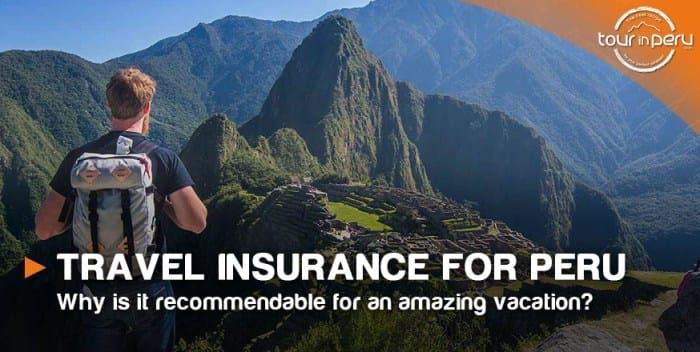
Traveling to Peru and Bolivia offers a wealth of cultural and natural wonders, but it’s essential to prioritize your health and well-being during your journey. Health insurance plays a pivotal role in ensuring you receive proper medical care while abroad, safeguarding you from potential health risks and their associated financial burdens.
Peru and Bolivia, like many destinations, pose unique health risks that can arise unexpectedly. These may include altitude sickness, gastrointestinal issues, respiratory infections, and exposure to infectious diseases. Medical emergencies, such as accidents or sudden illnesses, can also occur, requiring prompt and adequate medical attention.
Financial Implications
Medical expenses in Peru and Bolivia can be substantial, especially for emergency care or specialized treatments. Without health insurance, you may face significant financial liabilities, potentially derailing your travel plans and causing long-term financial strain.
Health insurance provides a safety net, covering a range of medical expenses, including hospitalization, medical procedures, medications, and emergency transportation. It offers peace of mind, allowing you to focus on enjoying your travels without the worry of unexpected medical bills.
Types of Health Insurance Coverage
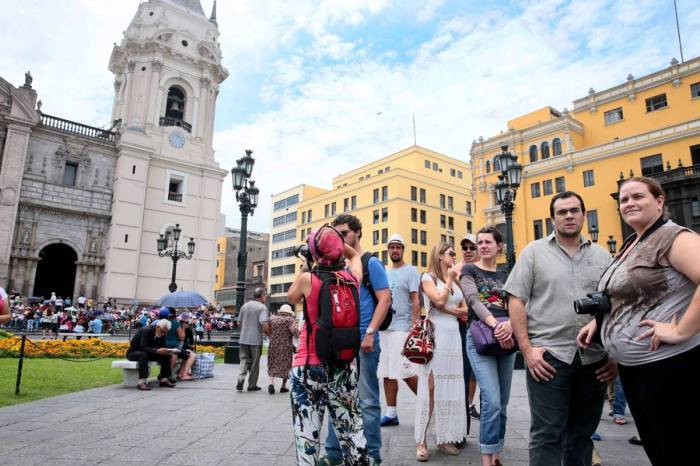
Selecting the appropriate health insurance plan for travel to Peru and Bolivia requires a comprehensive understanding of the available coverage options. Different types of health insurance plans offer varying benefits, limitations, and considerations. It’s crucial to carefully evaluate each plan’s features to ensure it aligns with your specific needs and travel itinerary.
Basic Coverage
Basic coverage plans provide fundamental medical benefits for routine illnesses and minor accidents during travel. These plans typically cover emergency medical expenses, such as hospitalizations, doctor visits, and prescription medications. However, they may have limitations on the duration of coverage, the types of medical services covered, and the maximum benefit amounts.
Basic coverage plans are generally more affordable but may not be sufficient for travelers with pre-existing conditions or those planning extensive or adventurous activities.
Comprehensive Coverage
Comprehensive coverage plans offer a wider range of medical benefits and higher coverage limits compared to basic plans. They typically include coverage for pre-existing conditions, routine checkups, preventive care, and emergency medical transportation. Comprehensive plans may also provide coverage for trip cancellation, baggage loss, and other travel-related expenses.
These plans are more expensive than basic plans but offer greater peace of mind and protection for travelers with complex medical needs or those engaging in high-risk activities.
Short-Term Coverage
Short-term coverage plans are designed for travelers who need health insurance for a specific period, such as a vacation or business trip. These plans typically provide coverage for a few weeks or months and can be purchased online or through a travel agent.
Short-term coverage plans are generally more affordable than annual plans but may have limitations on the types of medical services covered and the maximum benefit amounts.
Long-Term Coverage
Long-term coverage plans are suitable for travelers who plan to reside in Peru or Bolivia for an extended period, such as expats or students. These plans typically provide comprehensive coverage for a full year or more and may include benefits such as routine checkups, preventive care, and coverage for pre-existing conditions.
Long-term coverage plans are generally more expensive than short-term plans but offer greater flexibility and peace of mind for individuals living abroad.
Pre-Trip Considerations

To ensure adequate health insurance coverage while traveling to Peru and Bolivia, it is essential for travelers to take proactive steps before their trip. Planning ahead can prevent unexpected medical expenses and provide peace of mind during their journey.
Prior to departure, travelers should diligently follow these steps to secure comprehensive health insurance coverage:
Obtaining Necessary Documentation and Information
Travelers should contact their insurance provider well in advance of their trip to obtain the necessary documentation and information related to their health insurance coverage. This may include:
- A copy of the insurance policy, including details of coverage, benefits, and exclusions.
- Contact information for the insurance provider, including a 24/7 emergency assistance number.
- A list of covered medical facilities and providers in Peru and Bolivia, if applicable.
- Information on the claims process, including instructions for submitting claims and reimbursement procedures.
Carrying Essential Documents while Traveling
It is crucial for travelers to carry a copy of their insurance policy and contact information while traveling. This documentation should be easily accessible in case of a medical emergency or unexpected situation.
Travelers should consider storing a digital copy of their insurance policy and contact information on their mobile devices or cloud storage for easy access.
Choosing the Right Health Insurance Provider
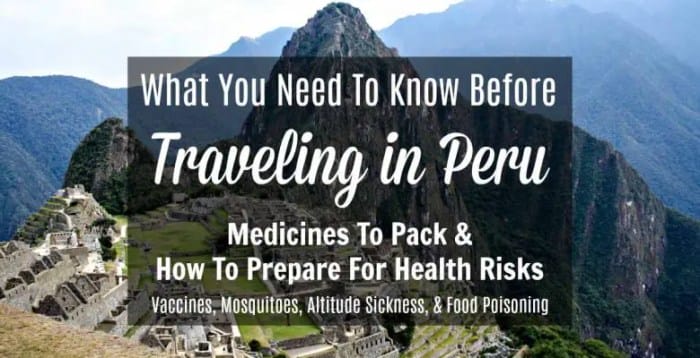
Selecting the right health insurance provider for travel to Peru and Bolivia is crucial to ensure peace of mind and adequate coverage in case of medical emergencies. Consider these key factors when making your choice: Financial Stability: Choose an insurance provider with a strong financial background and a history of paying claims promptly.
Research the company’s financial ratings and reviews from previous customers. Coverage Options: Compare the coverage options offered by different providers to find a plan that suits your needs. Consider factors such as the extent of medical coverage, emergency evacuation coverage, and repatriation coverage.
Policy Limits: Pay attention to the policy limits, which determine the maximum amount the insurance company will pay for covered expenses. Ensure that the policy limits are sufficient to cover potential medical costs in Peru and Bolivia. Network of Providers: Check if the insurance provider has a network of healthcare providers in Peru and Bolivia.
This can facilitate access to quality medical care and streamline the claims process. Customer Service: Consider the reputation of the insurance provider for its customer service. Read reviews and testimonials to gauge the company’s responsiveness and willingness to assist customers in resolving issues.
Cost: Compare the premiums and deductibles offered by different providers to find a plan that fits your budget. Keep in mind that a higher premium may provide more comprehensive coverage and peace of mind.
Comparison of Different Insurance Providers
Conduct thorough research to compare the offerings of different insurance providers. Consider factors such as coverage options, policy limits, network of providers, customer service, and cost. Some reputable insurance providers include:
- Allianz Global Assistance
- Blue Cross Blue Shield
- Cigna Global Health Benefits
- GeoBlue
- IMG
Tips for Finding Reputable and Reliable Insurance Companies
- Check the insurance provider’s licensing and accreditation status with relevant regulatory bodies.
- Read reviews and testimonials from previous customers to gauge the company’s reputation and reliability.
- Contact the insurance provider directly to inquire about their coverage options, policy limits, and customer service.
- Consider using a travel insurance comparison website to compare the offerings of multiple providers simultaneously.
Coverage for Specific Conditions

When traveling to Peru or Bolivia, individuals with pre-existing medical conditions or chronic illnesses should consider the following coverage options and procedures.
Declaring Pre-existing Conditions
It is crucial to declare any pre-existing conditions to the insurance provider before purchasing a travel health insurance policy. Failure to do so may result in the denial of coverage for claims related to the undisclosed condition.
The process for declaring pre-existing conditions varies among insurance providers. Generally, it involves completing a medical questionnaire or providing a medical history form.
Documentation for Pre-existing Conditions
To support the declaration of pre-existing conditions, individuals may be required to provide medical records and documentation. These may include:
- Doctor’s diagnosis and treatment plan
- Medical test results
- Hospitalization records
- Prescription medications
It is advisable to obtain these documents well in advance of the trip to ensure they are available when applying for travel health insurance.
Coverage Options for Pre-existing Conditions
The coverage options for pre-existing conditions vary depending on the insurance provider and the specific policy. Some common coverage options include:
- Full coverage: This option provides coverage for pre-existing conditions without any exclusions or limitations.
- Partial coverage: This option provides coverage for pre-existing conditions with certain limitations, such as a higher deductible or co-payment.
- Exclusion: This option excludes coverage for pre-existing conditions altogether.
It is important to carefully review the policy terms and conditions to understand the coverage options available for pre-existing conditions.
Emergency Medical Evacuation
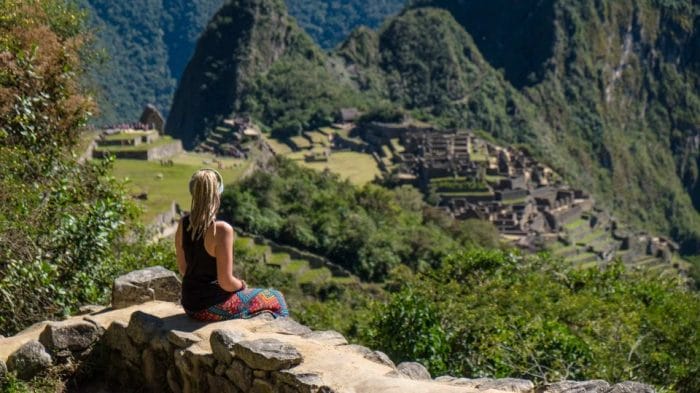
In remote areas of Peru and Bolivia, access to adequate medical facilities may be limited, making emergency medical evacuation a crucial consideration. This coverage provides transportation to the nearest suitable medical facility in case of a life-threatening illness or injury.
Arranging Medical Evacuation
Coordinating medical evacuation typically involves contacting the insurance provider’s emergency assistance hotline, who will arrange for transportation and necessary medical care. The process usually involves the following steps:
- Contacting the insurance provider’s emergency assistance hotline.
- Providing relevant information, including the policyholder’s name, policy number, and details of the medical emergency.
- The insurance provider assessing the situation and determining the most appropriate course of action.
- Arranging for transportation to the nearest suitable medical facility, which may involve air ambulance, ground transportation, or a combination of both.
- Covering the costs of transportation, medical care, and other related expenses as per the policy limits.
Costs Associated with Medical Evacuation
The costs associated with medical evacuation can vary depending on the location, the severity of the medical condition, and the mode of transportation required. Generally, medical evacuation can be a substantial expense, often exceeding tens of thousands of dollars. Having adequate coverage for emergency medical evacuation can provide peace of mind and financial protection in case of an emergency.
Choosing a Comprehensive Plan
When selecting a health insurance plan for travel to Peru and Bolivia, it’s essential to carefully review the emergency medical evacuation coverage. Look for a plan that offers:
- Worldwide coverage, including remote and rural areas.
- Coverage for a range of medical emergencies, including accidents, illnesses, and pre-existing conditions.
- Adequate coverage limits to cover the potential costs of medical evacuation.
- A clear and straightforward process for arranging medical evacuation.
- 24/7 access to the insurance provider’s emergency assistance hotline.
By choosing a comprehensive plan with robust emergency medical evacuation coverage, travelers can ensure they have the necessary protection and peace of mind during their journey.
Claims and Reimbursement
Navigating the claims process after a medical emergency while traveling can be daunting, but understanding the steps involved and preparing the necessary documentation can ensure a smooth and hassle-free experience.
Filing a Health Insurance Claim
When faced with a medical emergency during your travels, promptly informing your health insurance provider is crucial. Most providers have dedicated helplines or online portals for claims submission. Clearly state your policy number, personal details, and the nature of the medical emergency.
The insurance company will provide guidance on the specific documentation required and the process for submitting your claim.
Required Documentation
To support your claim, gather the following documents:
Completed claim form
Your health insurance provider will provide a claim form that needs to be filled out accurately and completely.
Medical records
Collect all medical records related to the emergency, including doctor’s reports, hospital bills, prescriptions, and receipts for medications purchased.
Proof of payment
Keep receipts and invoices for any medical expenses incurred during the emergency.
Travel itinerary
Provide copies of your flight tickets, hotel reservations, and other travel-related documents to establish that you were traveling during the medical emergency.
Passport and visa copies
Include copies of your passport and visa to verify your travel status.
Tips for a Smooth Claims Process
Keep detailed records
Maintain a comprehensive record of all medical expenses, including receipts, invoices, and medical reports.
Prompt submission
Submit your claim as soon as possible after the medical emergency to avoid delays in processing.
Accuracy is key
Ensure that all information provided in the claim form and supporting documents is accurate and complete.
Communicate effectively
Maintain open communication with your health insurance provider throughout the claims process. Promptly respond to any queries or requests for additional information.
Consider using a claims advocate
If you find the claims process overwhelming, consider hiring a claims advocate who can assist you with the paperwork and ensure your claim is handled efficiently.By following these steps and providing the necessary documentation, you can expedite the claims process and ensure a smooth reimbursement experience.
Travel Advisories and Warnings
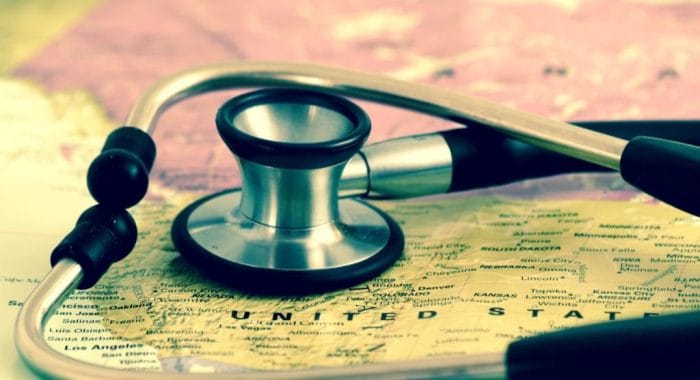
When planning an international trip, it’s crucial to stay informed about travel advisories and warnings issued by government agencies. These advisories provide valuable information to help travelers make informed decisions about their safety and well-being during their journey.
Travel advisories and warnings are typically issued by the foreign affairs or travel advisory departments of government agencies. They are based on assessments of political, social, and security conditions in various countries and regions. These advisories are designed to inform travelers about potential risks and hazards, such as civil unrest, natural disasters, health risks, or terrorist threats.
Accessing and Interpreting Travel Advisories
Travel advisories and warnings are widely available online and through official government websites. Travelers should regularly check these sources for up-to-date information before and during their trip. It’s also advisable to register with your country’s embassy or consulate in the destination country to receive updates and assistance if necessary.
When interpreting travel advisories, it’s important to pay attention to the level of risk assigned to the destination. Advisories typically use a color-coded system or numerical scale to indicate the level of risk, ranging from low to extreme. Travelers should carefully consider the risks associated with their destination and make informed decisions about whether to proceed with their travel plans.
Impact on Health Insurance Coverage and Claims
Travel advisories and warnings can have a significant impact on health insurance coverage and claims. Some health insurance policies may have exclusions or limitations for travel to certain countries or regions that are considered high-risk. It’s important to carefully review your policy’s terms and conditions to understand any restrictions or exclusions that may apply.
In cases where a travel advisory or warning is issued after a policy has been purchased, the insurer may offer options such as policy cancellation or premium refund. However, it’s essential to check the policy’s specific terms and conditions to determine the available options and any applicable fees or penalties.
Resources and Further Information
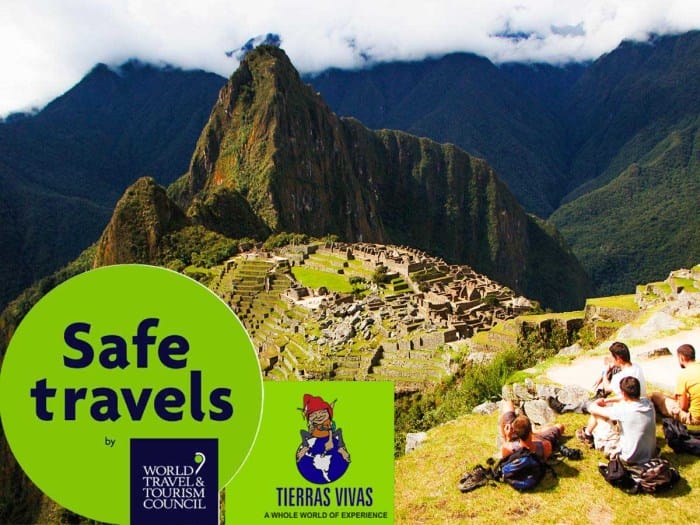
For additional information about health insurance for travel to Peru and Bolivia, refer to reputable sources and resources.
These sources include government websites, travel advisories, and insurance provider websites. Furthermore, relevant embassies and consulates in Peru and Bolivia can provide contact information for assistance.
Government Websites
- Peru Ministry of Health: Provides information on healthcare in Peru, including a list of hospitals and clinics.
- Bolivia Ministry of Health: Offers information on healthcare in Bolivia, including a list of hospitals and clinics.
- U.S. Department of State: Provides travel advisories for Peru and Bolivia, including information on health risks and recommended vaccinations.
Travel Advisories
- Centers for Disease Control and Prevention (CDC): Provides travel advisories for Peru and Bolivia, including information on health risks and recommended vaccinations.
- World Health Organization (WHO): Offers travel advisories for Peru and Bolivia, including information on health risks and recommended vaccinations.
Insurance Provider Websites
- Allianz Travel Insurance: Provides information on travel insurance plans that cover Peru and Bolivia.
- AIG Travel Guard: Offers information on travel insurance plans that cover Peru and Bolivia.
- HTH Worldwide: Provides information on travel insurance plans that cover Peru and Bolivia.
Embassies and Consulates
- U.S. Embassy in Peru: Provides contact information and assistance for U.S. citizens traveling to Peru.
- U.S. Embassy in Bolivia: Provides contact information and assistance for U.S. citizens traveling to Bolivia.
- Peruvian Embassy in the United States: Provides contact information and assistance for Peruvian citizens traveling to the United States.
- Bolivian Embassy in the United States: Provides contact information and assistance for Bolivian citizens traveling to the United States.
Outcome Summary
In conclusion, health insurance is an indispensable travel companion for your journey to Peru and Bolivia. By carefully considering your coverage options, pre-trip preparations, and emergency procedures, you can ensure peace of mind and focus on creating lasting memories. Embrace the beauty of these countries, knowing you’re protected against unforeseen health challenges.
FAQs
Q: Is health insurance mandatory for travel to Peru and Bolivia?
A: While not legally required, it is strongly recommended to purchase health insurance before your trip. Medical expenses in these countries can be substantial, and insurance can provide financial protection in case of an emergency.
Q: What types of health insurance coverage are available for travelers?
A: There are various types of health insurance coverage available, including comprehensive plans that cover a wide range of medical expenses, as well as more limited plans that provide coverage for specific risks, such as accidents or medical emergencies.
Q: How can I choose the right health insurance plan for my trip?
A: Consider factors such as the duration of your trip, the activities you plan to engage in, and any pre-existing medical conditions you may have. It’s also important to read the policy carefully to understand the coverage limits and exclusions.
Q: What should I do if I need to file a health insurance claim while traveling?
A: Contact your insurance provider immediately to initiate the claims process. You will typically need to provide documentation, such as medical bills, receipts, and a claim form. Follow the instructions provided by your insurance company to ensure a smooth claims process.



